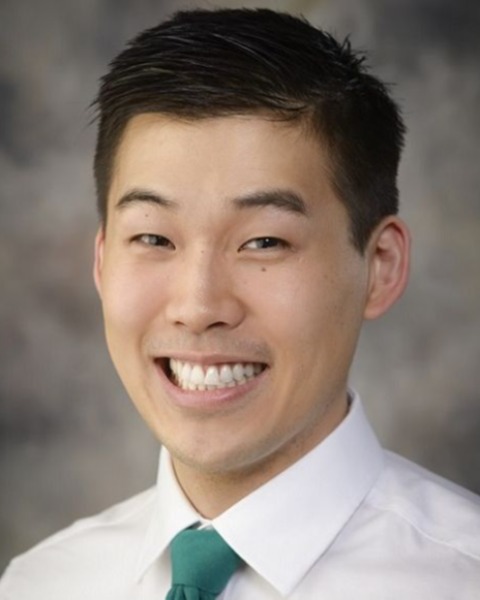Infectious Diseases
Category: Abstract Submission
Infectious Diseases: Bacteria & Antimicrobials
303 - Postoperative Antibiotic Exposures in Children Following Spinal Fusion for Scoliosis across U.S. Children’s Hospitals
Friday, April 22, 2022
6:15 PM - 8:45 PM US MT
Poster Number: 303
Publication Number: 303.114
Publication Number: 303.114
Gabriella S. Lamb, Boston Children's Hospital, Boston, MA, United States; Anna G. Desmarais, Boston Children's Hospital, Boston, MA, United States; Hanna Wardell, Boston Children's Hospital, Boston, MA, United States; Patrice Melvin, Boston Children's Hospital, Boston, MA, United States; Sangeeta Mauskar, Boston Children's Hospital, Southborough, MA, United States; Jonathan Mansbach, Boston Children's Hospital, Boston, MA, United States; Jay Berry, Boston Children's Hospital, Boston, MA, United States; Peter Hong, Boston Children's Hospital, Boston, MA, United States

Peter Hong, MD, MBI, FAAP
Clinical Fellow
Boston Children's Hospital
Boston, Massachusetts, United States
Presenting Author(s)
Background: Children undergoing spinal fusion (SF) for scoliosis experience antimicrobial exposures (AE) to mitigate and treat infections. Children with neuromuscular scoliosis may experience more AE due to underlying medical complexity and fragility.
Objective: We compared AE between children with and without neuromuscular scoliosis undergoing SF.
Design/Methods: Retrospective analysis of children age 4+ years undergoing SF for scoliosis from 1/1/2016 to 12/31/2020 in 48 U.S. children’s hospitals in the Pediatric Health Information System database. AEs were measured in number of exposures per 1,000 bed days as well as Gerber and Colleagues’ 2017 antibiotic spectrum index. We used Feudtner’s Complex Chronic Conditions (v2) to identify children with neuromuscular scoliosis. AE were compared in children with vs. without neuromuscular scoliosis using chi-square tests. AE variation across hospitals was assessed using generalized linear models. Pearson correlation was used to assess whether more AE for methicillin resistant staph aureus (MRSA) and multi-drug resistant gram negatives (MDRGN) occurred in hospitals residing in U.S. states with a higher percentage of resistant isolates reported by the CDC.
Results: Of 23,041 children who underwent SF, there were 830 AEs per 1,000 bed days. Twenty-four percent of children had neuromuscular scoliosis; AE were higher in children with vs. without neuromuscular scoliosis on post-operative day two (43.1% vs. 26.5%), three (31.4% vs. 12.9%), and four (23.3% vs. 4.9%), p< .001 for all. There was significant (p < .001) variation across hospitals in AE exposure, especially for MRSA (idiopathic scoliosis: 32 to 100%; neuromuscular scoliosis: 8% to 100%) and MDRGN (idiopathic scoliosis: range 3 to 100%; neuromuscular scoliosis: range 8% to 95%). Hospitals with higher AE for MRSA and MDRGN did not tend to reside in U.S. states with a higher percentage of resistant isolates; percentage of resistant isolates did not correlate at all with use of MRSA [Pearson coefficient = .008 (p = 0.5)] and MDRGN [Pearson coefficient = .002 (p = 0.7)] agents, respectively.Conclusion(s): Post-operative AEs, including those for MRSA and MDRGN, were common in children undergoing SF for scoliosis, especially children with neuromuscular scoliosis. There was substantial variation in AE across hospitals, with some hospitals exposing nearly all of their patients to MDRGN coverage post-operatively. This variation in AE did not correlate with state-wide antibiotic resistance patterns. Further investigation is needed to assess the appropriateness, risks, and benefits of AE in children undergoing SF.
Objective: We compared AE between children with and without neuromuscular scoliosis undergoing SF.
Design/Methods: Retrospective analysis of children age 4+ years undergoing SF for scoliosis from 1/1/2016 to 12/31/2020 in 48 U.S. children’s hospitals in the Pediatric Health Information System database. AEs were measured in number of exposures per 1,000 bed days as well as Gerber and Colleagues’ 2017 antibiotic spectrum index. We used Feudtner’s Complex Chronic Conditions (v2) to identify children with neuromuscular scoliosis. AE were compared in children with vs. without neuromuscular scoliosis using chi-square tests. AE variation across hospitals was assessed using generalized linear models. Pearson correlation was used to assess whether more AE for methicillin resistant staph aureus (MRSA) and multi-drug resistant gram negatives (MDRGN) occurred in hospitals residing in U.S. states with a higher percentage of resistant isolates reported by the CDC.
Results: Of 23,041 children who underwent SF, there were 830 AEs per 1,000 bed days. Twenty-four percent of children had neuromuscular scoliosis; AE were higher in children with vs. without neuromuscular scoliosis on post-operative day two (43.1% vs. 26.5%), three (31.4% vs. 12.9%), and four (23.3% vs. 4.9%), p< .001 for all. There was significant (p < .001) variation across hospitals in AE exposure, especially for MRSA (idiopathic scoliosis: 32 to 100%; neuromuscular scoliosis: 8% to 100%) and MDRGN (idiopathic scoliosis: range 3 to 100%; neuromuscular scoliosis: range 8% to 95%). Hospitals with higher AE for MRSA and MDRGN did not tend to reside in U.S. states with a higher percentage of resistant isolates; percentage of resistant isolates did not correlate at all with use of MRSA [Pearson coefficient = .008 (p = 0.5)] and MDRGN [Pearson coefficient = .002 (p = 0.7)] agents, respectively.Conclusion(s): Post-operative AEs, including those for MRSA and MDRGN, were common in children undergoing SF for scoliosis, especially children with neuromuscular scoliosis. There was substantial variation in AE across hospitals, with some hospitals exposing nearly all of their patients to MDRGN coverage post-operatively. This variation in AE did not correlate with state-wide antibiotic resistance patterns. Further investigation is needed to assess the appropriateness, risks, and benefits of AE in children undergoing SF.
